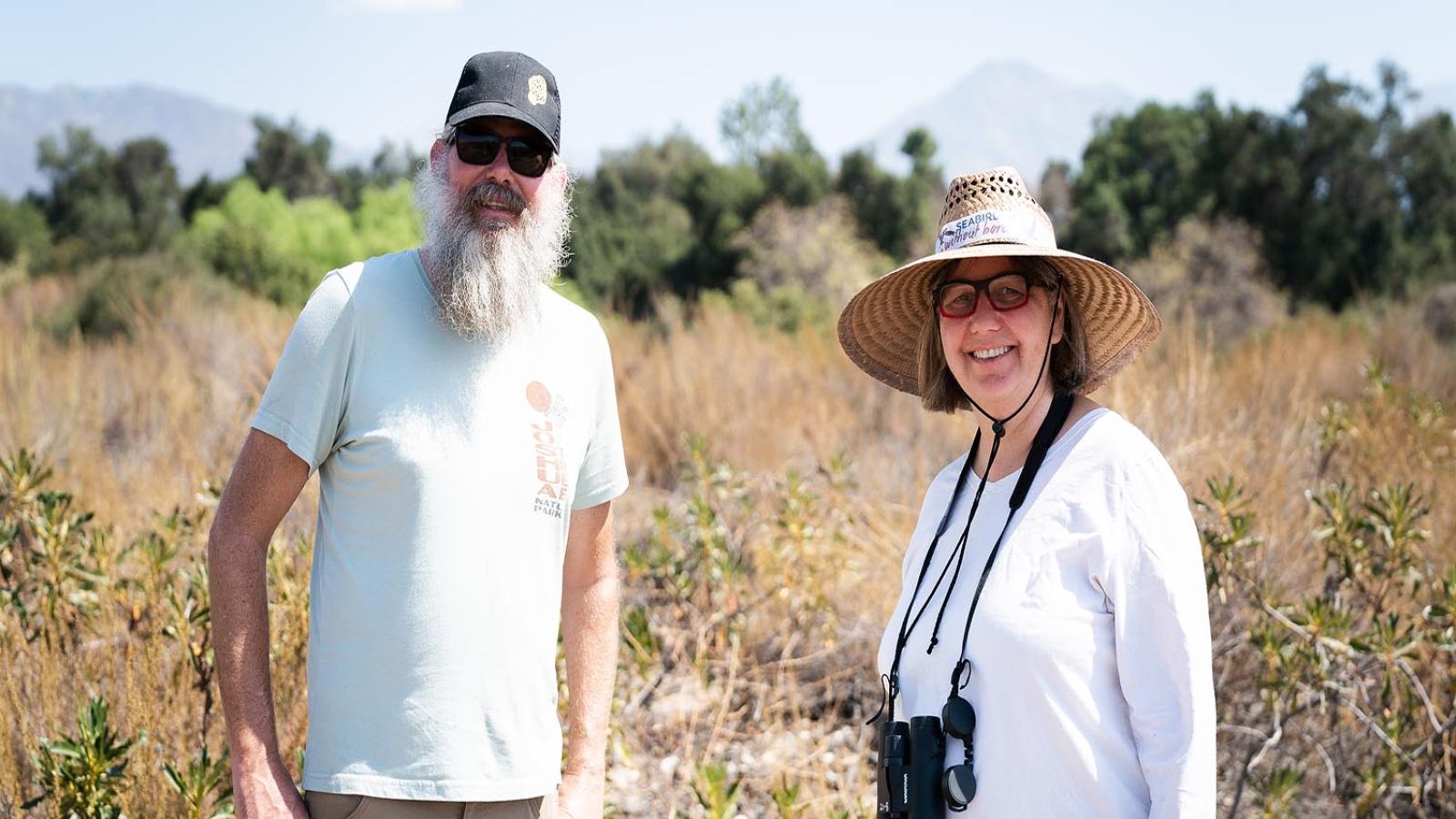College students across Southern California—and perhaps someday beyond the Golden State—can now take part in collaborative multi-institutional ecological research with other undergraduates and their professors, thanks to the leadership of Pomona College biologists Nina Karnovsky and Wallace “Marty” Meyer.
A five-year National Science Foundation (NSF) grant, starting September 1 and totaling $499,000, will fund implementation of RESCUE-Net—Research Experiences in Southern California for Undergraduate Ecologists Network. Led by Karnovsky and Meyer, the collaboration aims to inspire and train the next generation of ecologists so they can tackle major challenges facing the world. Karnovsky is Willard George Halstead Zoology Professor of Biology and department chair. Meyer is Director of the Bernard Field Station and associate professor of biology.
“Collaboration is the key to ecology, with research done across different sites and over long periods of time,” says Karnovsky. Undergraduates can do excellent research, but too often projects involve just one student in one institution and one lab. “We realized that it would be so powerful to find a way to have undergraduates collaborate with each other,” Karnovsky explains.
During the pandemic, Karnovsky and Meyer reached out to other institutions across the region which primarily focus on undergraduate education to invite their participation. More than 20 colleges and universities have already become active in the network, which will begin joint research projects this fall semester, and others are welcome to join. “The more, the merrier,” says Meyer.
Network offers high-impact opportunities
Cinzia Fissore, associate professor of biology at Whittier College, is “excited to be part of such an interdisciplinary team of scientists from Southern California as we work together to develop high-impact opportunities for our students.” She notes the lasting benefit of directed research and collaborative work in undergraduate education, especially for students from groups historically excluded from STEM disciplines. “Being able to collaborate with the other RESCUE-Net participants and their institutions, I will be able to expand the portfolio of activities that I can offer to my students, while providing practical examples of the interdisciplinary nature of ecological research,” she says.
Professors are “passionate about mentoring their students,” says Karnovsky, “but they’re also really passionate about conservation. They see this as important for the future of Southern California, a place where we have so much biodiversity. We have fire, we have drought, we have urbanization, and we need to understand what are the impacts of all these things.”
A vital way forward, Karnovsky says, “is to get students engaged. They really care about these issues, and they want to do research, to investigate these problems and participate in improving the planet.” Adds Meyer, “hopefully we’re inspiring them to go into the conservation workforce in Southern California and have a huge impact on our region.”
Collaboration will take three forms
Research projects will take three forms in RESCUE-Net. In fall semester 2022, Meyer will lead a multi-site research project measuring the rates and primary drivers of garden mulch decomposition. Using mulch to conserve water has become a common landscaping technique. But, Meyer explains, as mulch breaks down, it releases carbon dioxide into the atmosphere. So while wide use of mulch may be good for water conservation, it may have a negative impact on climate change.
During spring semester 2023, a second type of collaboration—Course-based Undergraduate Research Experience—will launch, led by H. Jochen Schenk of California State University-Fullerton. Professors teaching courses such as Plant Physiology and Introduction to Ecology will include a research component in which students will measure and compare heat stress in different types of plants. “Plant physiologists across Southern California have wanted to carry out this research, but it’s really, really hard to take same-day measurements across the region by yourself,” says Karnovsky. “Now the students will be able to collect and analyze the data.”
In the second year of the grant, another type of collaborative research will be introduced. In the Mentored Undergraduate Research Experience, students themselves will develop the research questions and hypotheses that they want to investigate under the guidance of a professor. By the end of the grant period in 2027, Karnovsky and Meyer expect there will be a significant number of undergraduate research projects completed with publications and inspiration for hundreds of future ecologists.
Meyer says that he and Karnovsky have a vision someday to create a Mediterranean ecosystem research network. “We are doing similar research as people in Australia, Chile and South Africa,” he says. “All these Mediterranean climate regions are biodiversity hotspots. These are areas that harbor a lot of species found nowhere else in the world and they’ve lost over 70 percent of their landscape. A lot of the threats we face in Southern California are faced by those regions as well.”
While Karnovsky and Meyer have been instrumental in forming RESCUE-Net, they see leadership as becoming increasingly diversified. “Our goal,” says Meyer, is “to have opportunities for people that are really inspired and excited” about collaborative research.
